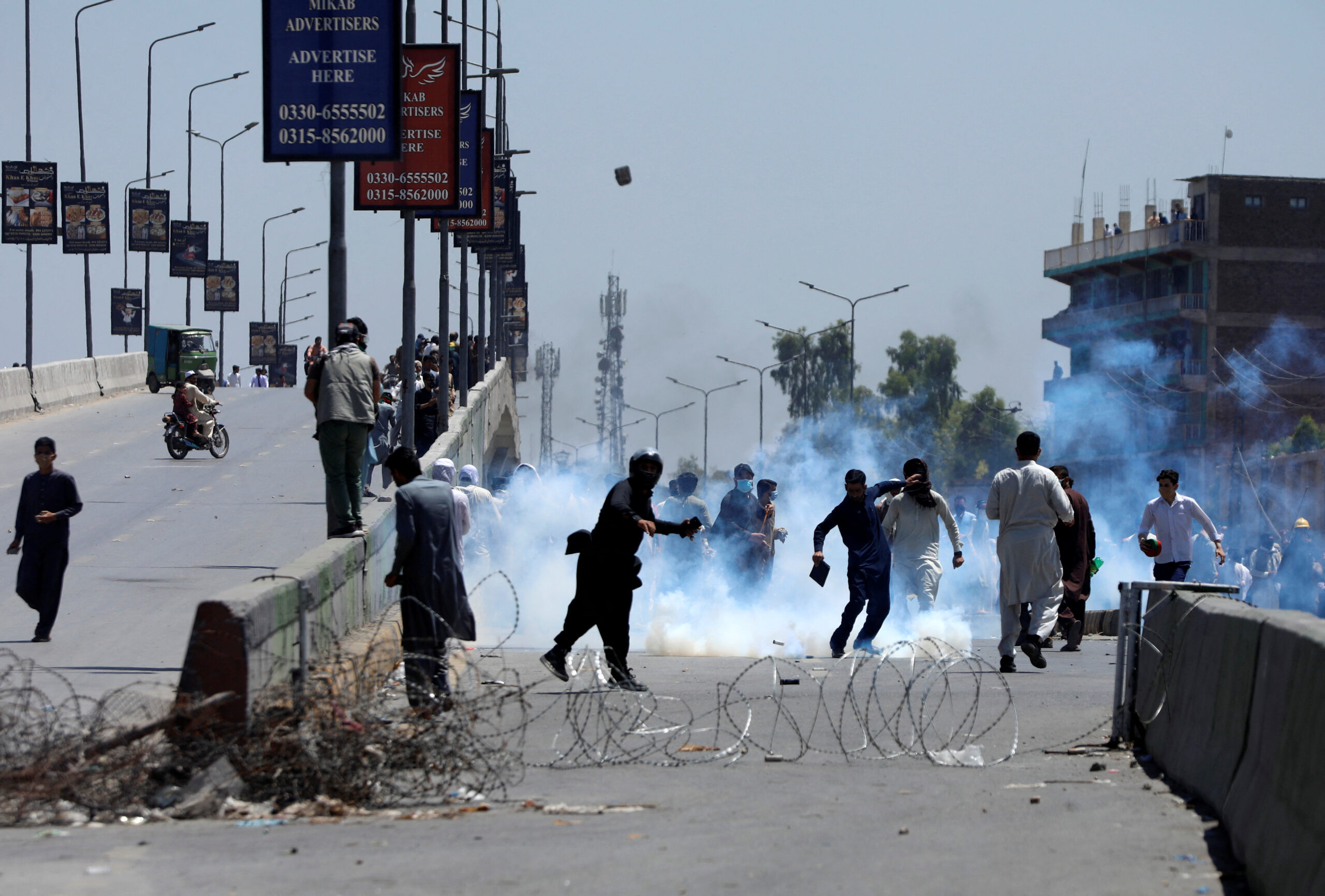
Pakistan is gripped by escalating violence as protests demanding the release of former Prime Minister Imran Khan have turned deadly. On Monday, clashes between protesters and security forces in Islamabad resulted in the deaths of four security personnel and one demonstrator, prompting the Army to issue ‘shoot at sight’ orders under Article 245. Led by Khan’s wife, Bushra Bibi, the protests have intensified, with demonstrators vowing to march on despite severe crackdowns.
Key Developments in the Protests
- Violence in Islamabad:
Protesters clashed with security forces late Monday as they attempted to reach D-Chowk, a politically significant area near strategic government buildings. Tear gas was used to disperse crowds, but demonstrators, equipped with gas masks and heavy machinery, removed barriers and continued their march. - ‘Shoot at Sight’ Orders:
The Army, citing the deaths of four paratroopers, invoked Article 245 and granted military forces the authority to fire at will. This marks a significant escalation in the government’s response to the unrest. - Nationwide Disruption:
- School Closures: All educational institutions in Islamabad were shut down.
- Mobile Service Blackouts: Communications were suspended in several regions to curb the coordination of protests.
- Blocked Highways: Key routes, including the Grand Trunk Road, were barricaded with shipping containers, leading to severe travel disruptions.
- Bushra Bibi’s Role:
Recently released on bail in a corruption case, Bushra Bibi addressed protesters while urging them to remain steadfast. She continues to lead the march alongside Ali Amin Gandapur, despite heavy police resistance.
The Larger Context
The unrest stems from the continued imprisonment of Imran Khan, who has been jailed for over a year and faces more than 150 cases, ranging from corruption to incitement of violence. A former cricket star turned politician, Khan retains significant support, particularly in Punjab and Khyber Pakhtunkhwa, regions where his party, the Pakistan Tehreek-e-Insaf (PTI), holds power.
Protesters’ Determination Amid Crackdowns
Videos shared on social media reveal the extent of the crackdown. PTI alleges the use of chemical agents from planes to suppress protests. Ambulances and civilian vehicles have reportedly been turned back due to roadblocks. PTI leader Kamran Bangash stated:
“We will overcome all hurdles one by one and reach Islamabad.”
Demonstrators have shown resilience, dismantling obstacles and marching despite injuries and arrests.
Government’s Response and International Implications
The government, led by Prime Minister Shehbaz Sharif, has imposed strict measures to contain the protests, including bans on gatherings of more than five people in Islamabad. The escalating violence and the use of military force have drawn criticism from international observers, raising concerns about human rights violations and political instability in Pakistan.
What Lies Ahead?
With tensions at an all-time high, the situation remains volatile. The protests reflect widespread dissatisfaction with Khan’s imprisonment and broader political grievances. The ‘shoot at sight’ orders, coupled with the continued march towards Islamabad, signal a potential for further bloodshed in the coming days.


